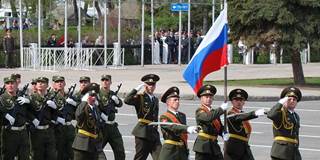俄国从回忆到否认
伦敦——我在俄罗斯最痛苦的经历是1998年参观斯大林时期唯一保存下来的“柏姆36号”强制劳改营。当时我在乌拉尔山区小城柏姆参加莫斯科政治研究学院组织的一次研讨活动。学院的创建者是著名的列娜·内米洛夫斯卡娅,创建的目的是引导后共产主义时期的俄罗斯年轻人认识民主、自治和资本主义。
一个寒冷的三月天,我和几个朋友一道前往劳改营。20世纪40年代初建时还是“常规”劳改营的柏姆36号于1972年被改建为关押政治犯的集中营。
1987年,即戈尔巴乔夫执政三年后释放了最后一名政治犯。现在持不同政见的物理学家安德烈·萨哈罗夫创立的人权组织“纪念”将其改建为警醒俄国人勿忘极权主义过去的古拉格博物馆。
https://prosyn.org/cGbUxEgzh
To continue reading, register now. It’s free!
Register Now
Already have an account?
Log in



伦敦——我在俄罗斯最痛苦的经历是1998年参观斯大林时期唯一保存下来的“柏姆36号”强制劳改营。当时我在乌拉尔山区小城柏姆参加莫斯科政治研究学院组织的一次研讨活动。学院的创建者是著名的列娜·内米洛夫斯卡娅,创建的目的是引导后共产主义时期的俄罗斯年轻人认识民主、自治和资本主义。
一个寒冷的三月天,我和几个朋友一道前往劳改营。20世纪40年代初建时还是“常规”劳改营的柏姆36号于1972年被改建为关押政治犯的集中营。
1987年,即戈尔巴乔夫执政三年后释放了最后一名政治犯。现在持不同政见的物理学家安德烈·萨哈罗夫创立的人权组织“纪念”将其改建为警醒俄国人勿忘极权主义过去的古拉格博物馆。